Aerotow
To perform a proper aerotow launch of a glider, climb into your glider and perform the following steps:
1. Perform the pre-takeoff checklist (seatbelts, control check, altimeter, etc)
2. Perform a pre-takeoff briefing
The idea of a pre-takeoff briefing is to get your mind ready for any anomolies or emergencies that may occur during your launch before they happen.
It might sound something like this: "If there is a failure below 200 feet (AGL), I will land the glider straight ahead. After 200 feet, I will make a turn left/right into the wind (actually state the direction!), and land downwind on the opposite runway."
3. Signal to the wing walker you are ready with a thumbs up, and he/she will raise the glider wings to level

4. Pull the stick back (aft) about 2/3 of its full travel to take pressure off the nose wheel and to make the glider lift off as soon as it is ready to fly
5. Radio to the tow pilot that you are ready, and follow it by an aggressive wag of the rudder left and right a few times
At this point, the tow pilot should wag his rudder in response, and begin the takeoff roll.
6. As glider lifts off, reduce the aft pressure on the stick to keep it within 5-6 feet of the ground
As the takeoff roll begins, the glider will lift off before the tow plane. It is important that you keep the glider low to the ground (5-6 feet) to not adversely affect the tow plane. As the tow plane lifts off and climbs out, positiion the glider directly behind it at a height that makes it appear to you as if the tow plane's wheels are on resting on the horizon. This is called the high tow position.
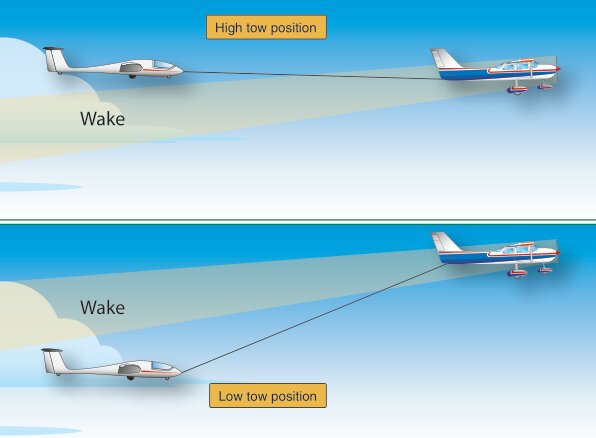
Maintain that position by making gentle corrections as you find yourself slightly high or low from this position. If you allow the glider to get excessively high, you may develop slack in the line. You can also cause very serious control issues for the tow plane, so it's very important that you focus completely on the tow and stay in position!
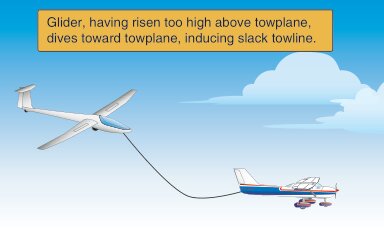
Also be careful to keep the glider pointed to the outside wing of the tow plane during turns to avoid developing slack in the tow rope.
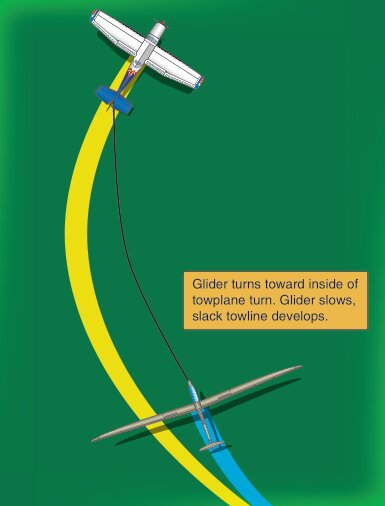
Lastly, it is important to note that if you ever lose sight of the tow plane, you must release immediately!
7. When you reach your target altitude, clear the area to your right, and to the left of the tow plane, then pull the release handle
After release, make a level (or climbing) right turn, and keep an eye out for the tow plane as he breaks off to the left.
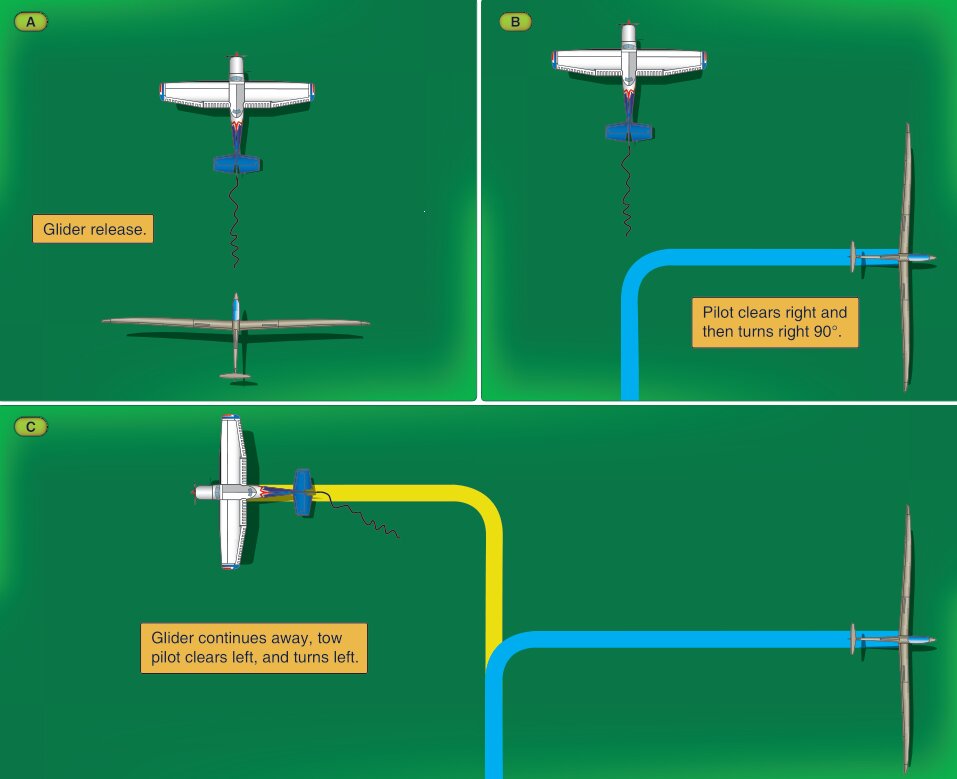
Tow Rope Limits
Ok, I didn't have anywhere else to put this that made sense, so here are the tow rope and safety link limits.
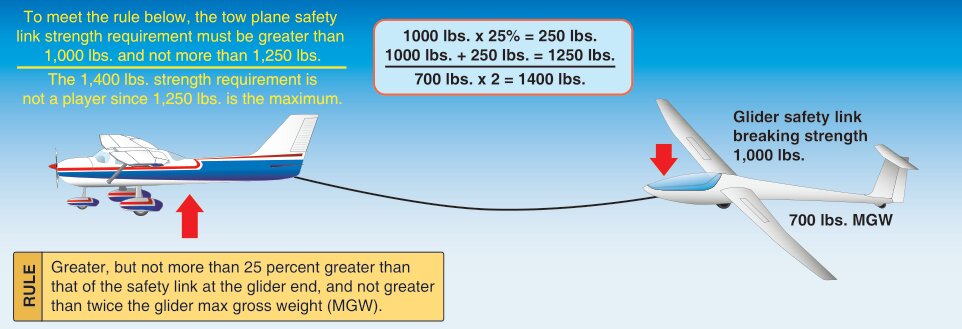
Slack Line Recovery
If you find yourself with a slack line, there are two ways to correct it.
1. Yaw the glider with the rudder pedals to reduce the slack
2. Use spoilers to add drag and reduce the slack
The SSA has a good video on slack line recovery here: